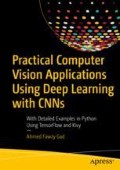Abstract
Machine learning (ML) problems can be divided into three categories: supervised, unsupervised, and reinforcement. In supervised learning, a human expert conducts some experiments in a restricted environment and notices their results. The supervised learning algorithm explores the data collected from experiments to map inputs to outputs. For example, a restricted environment might have a robot that wants to go from one side of a small room to another. There are some obstacles in the room that may make the robot fall. The supervisor provides guidance about how to reach the wall without falling. This is done by giving the robot knowledge in the form of examples to help it learn how to pass obstacles. The robot uses this knowledge to increase the probability of passing the obstacle without falling. In such a case, the knowledge of the robot is completely dependent on the human.
Access this chapter
Tax calculation will be finalised at checkout
Purchases are for personal use only
Author information
Authors and Affiliations
Rights and permissions
Copyright information
© 2018 Ahmed Fawzy Gad
About this chapter
Cite this chapter
Gad, A.F. (2018). Artificial Neural Networks. In: Practical Computer Vision Applications Using Deep Learning with CNNs. Apress, Berkeley, CA. https://doi.org/10.1007/978-1-4842-4167-7_2
Download citation
DOI: https://doi.org/10.1007/978-1-4842-4167-7_2
Published:
Publisher Name: Apress, Berkeley, CA
Print ISBN: 978-1-4842-4166-0
Online ISBN: 978-1-4842-4167-7
eBook Packages: Professional and Applied ComputingApress Access BooksProfessional and Applied Computing (R0)

